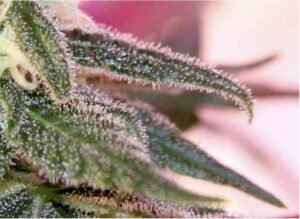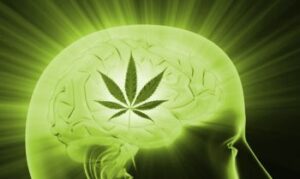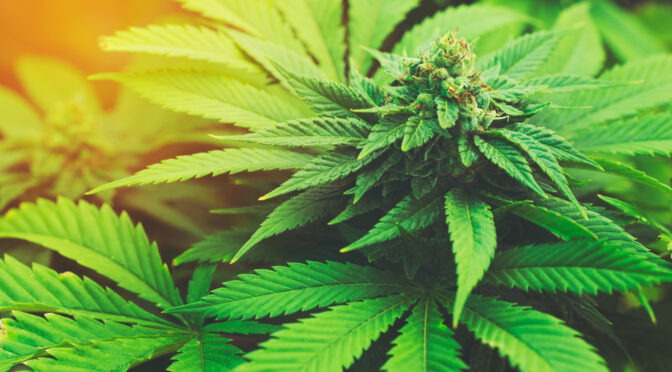Many of us suffer from headaches, unfortunately, conventional medicine helps in only a few cases and only if the medication is consumed immediately following the first signs of a headache. It is important to note, however, that all of these various medicaments are accompanied by side effects or harmful consequences. Luckily, according to numerous research efforts, there is a universal and harmless cure that is a product of nature itself – cannabis.
The latest work of Dr. Eric P. Baron from the Headache Center in Cleveland is a review of randomized, controlled researches that estimate the role of cannabinoids in pain management. Moreover, the study point out that cannabis is potentially therapeutic in healing headaches.

Also, the summary denotes that the use of cannabis plays an important role throughout history i.e. it was once the primary tool of medicine, and it was recommended by numerous, eminent doctors for various diseases, especially headaches and migraines.
Throughout the decades, this plant made a fascinating journey from a legal and prescribable cure to an illegal plant according to political and social factors rather than science.
Nonetheless, with an ever-growing support for a multitude of medicinal uses of cannabis, the misinformed conception of cannabis fades away, and a dramatic pressure for the legalization and research of medicinal cannabis has emerged.
Dr. Baron points out that doctors receive education with regards to history, pharmacology, clinical indications, and proper clinical use of cannabis since patients will inevitably ask questions about how to treat numerous diseases, including chronic pain.
Furthermore, she adds that 71 percent from the review of the 38 published randomized and controlled research efforts concerning the effects of cannabinoids in pain management deduce that cannabinoids have an empirically provable and statistically significant effect on pain mitigation.

Hence, this study is supported by human biology itself. In fact, CB1 receptors (cannabinoid receptors) are 10 times more concentrated that the-opioid receptors in the brain.
Anyone who suffers from migraines will confirm that the standard medicines prescribed to manage the pain are generally ineffective, or they are effective but accompanied by numerous negative side effects such as triptan, a specialized cure that affects certain serotonin receptors in the body, a system closely related to the endocannabinoid system. Dr. Baron adds that perhaps the lack of endocannabinoids is the main culprit for headaches.
The publication from the University in California offered a compelling explanation as to why the use of cannabis can prevent headaches and migraines. Namely, the substances in the brain similar to the substances found in cannabis, i.e. the cannabinoids, provide an analgesic effect by modulating the pain signal in the brain on the level of the spinal cord. It is likely that future generations of pain medicaments will be developed on the basis of the effects cannabinoids can have on the body.
The advantage of targeting the endocannabinoid system is that this practice will only block harmful or hurtful signals while the other senses continue to function normally, which is not the case with conventional medicines. Therefore, when we are aware that our bodies have endocannabinoid systems that regulate several processes in the organism, even pain, it is logical to assume and it has been proven scientifically that when the organism experiences pain, the cannabinoids from cannabis will help ameliorate the pain because they are a perfect match to our endogenous receptors; our endocannabinoid system returns to normal.

Toward the end of the research, it is suggested that the use of cannabis can have a therapeutic role when combatting numerous diseases, particularly those that are chronic, including headaches and migraines.
What’s more, significant results can be achieved with the help of medicinal cannabis and cannabinoids in treating several types of headaches such as migraines and cluster headaches. This information has become available because of the many individual cases or scientific researchers conducted in laboratories.
Furthermore, cannabis has a number of pharmacological and biochemical compounds, but only a small part have been entirely researched. Therefore, a substantial number of potential therapeutic applications remain undiscovered. Cannabinoids modulate and affect various characteristics of migraines similarly in the same way that conventional medicines do, an observation that points out to the potential synergic or similar benefits. Additionally, it is stated that because of the limited proofs and researches that demonstrate the role cannabis and cannabinoids play in headaches, randomized clinical researches still need to be developed and published.
Moreover, this publication needs to serve as a motivation for new research endeavors regarding the effect of cannabis on headaches, which will enable doctors to prescribe cannabis or cannabis-based medicaments as regular therapy.
Presumably, there is a large number of people who suffer from migraines and cluster headaches who would be anxious to take a part in such studies, and they would be grateful to have the possibility of undergoing a treatment that is not only functional, but that is also free from any kind of harmful side effects.
By: Violeta Pesic
References:

